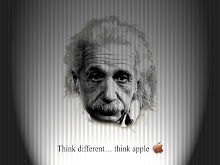Web 2.0 is a phrase coined in 2004 By O'Reilly Media. It refers to a theoretical second generation of Internet-based media and social networking sites, wikis, communication tools, etc and which emphasize online communities among users. Adaptability and improvement through the actions of users is an important feature of Web 2.0. Since 2004, some developers and marketers have adopted the term, though the exact definition of it is still debated. Some accept the idea of a new Internet as conventional wisdom. Others believe it is meaningless and just a marketing buzzword.
The technological infrastructure of Web 2.0 includes server software, the syndication of content, new messaging protocols, browsers based on specific standards which are expandable through plug-ins and extensions, and many client applications. These technological approaches provide Web 2.0 with capabilities in information storage, creation and dissemination that are changing the face of the Internet as we know it. Web 2.0 websites can include syndication of data, the use of tags (folksonomies), the use of wiki software (software that allows users to create and edit content on a collaborative website), and many other features.
Blogs are another important feature that has come into being with the advent of Web 2.0. Blog is a term short for wegblog, a personal or commercial website created in the format of an online journal. Entries appear in the sequence in which they are written. Blogs are generally methods for spreading opinion or personal reflection, rather than facts.
Wikis are another important part of the Web 2.0 mindset. Wiki software allows users to create and edit content on a collaborative website. The more use a wiki site receives, the denser its content becomes, and the higher its usability. The work wiki is abbreviated from the Hawaiian word wikiwiki, meaning quick.
Other features of Web 2.0 include Ajax, a web development technique for creating interactive applications; CSS, a stylesheet language which greatly increases the versatility of web design; XML and XHTML, (eXtensible Markup Language and eXtensible Hypertext Markup Language.) RSS feeds allow content to be easily syndicated from one site to another, and shortened, more readable URLs facilitate easier understanding of site names.
Folksonomy is another interesting concept that Web 2.0 has brought to the world. The word is a portmanteau of the words folk and taxonomy, meaning the spontaneous cooperation of a group of people in categorizing information. The most common forms of folksonomy are tagging and tag clouds, where users willingly categorize blog entries and other information. This allows the information to be easily sorted by someone browsing the Web.
The benefit of Web 2.0 is that it creates an increasingly manipulable Web environment, based on the actions of users in community. This environment increases in depth and usefulness as the users change and add to it. Web 2.0 is not only a technological phenomenon. The technology merely enables the growing social phenomenon of users interacting together on the Internet.
Tuesday, March 16, 2010
Subscribe to:
Post Comments (Atom)


No comments:
Post a Comment